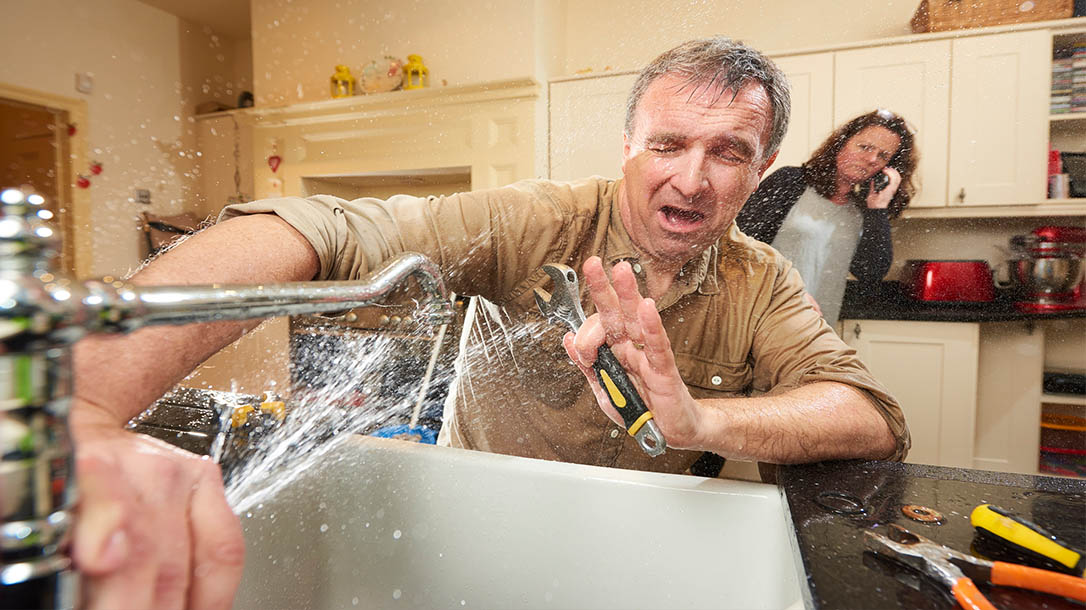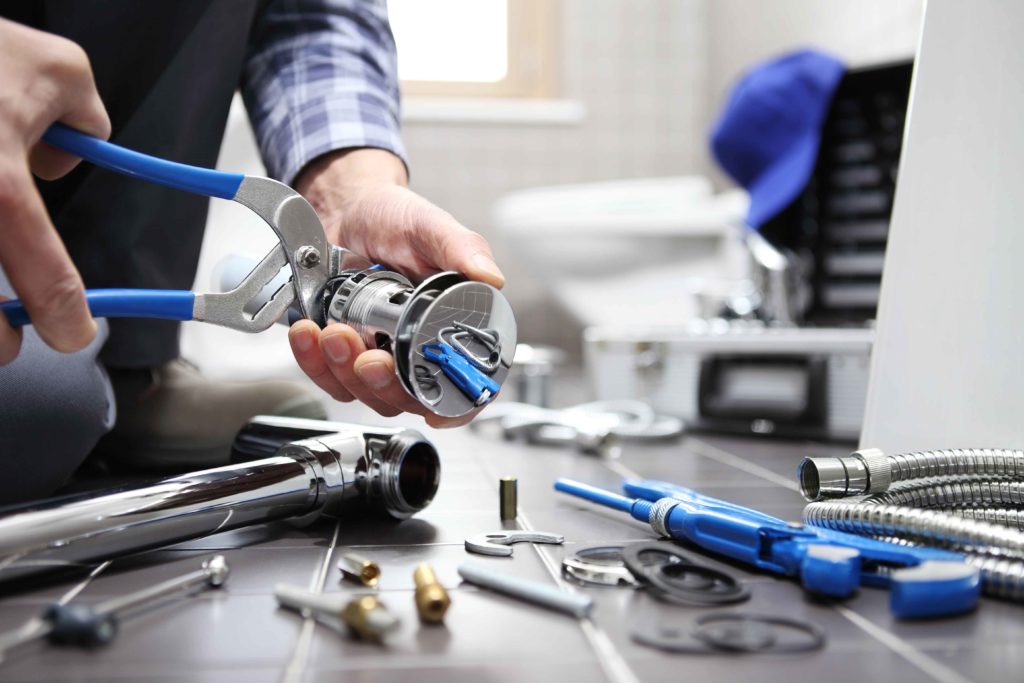How It's Mandatory to Deal with a Broken Faucet
How It's Mandatory to Deal with a Broken Faucet
Blog Article
The author is making several good annotation related to Leaky Faucets: Why They Happen & What to Do About Them as a whole in this post below.

Leaking taps might feel like a minor trouble, yet their effect exceeds just the inconvenience of the sound. From wasting water to incurring unneeded monetary prices and health risks, disregarding a trickling tap can cause different consequences. In this article, we'll delve into why it's critical to resolve this common household concern promptly and effectively.
Wastage of Water
Environmental Impact
Dripping faucets contribute significantly to water wastefulness. According to the Epa (EPA), a single tap trickling at one drip per secondly can waste greater than 3,000 gallons of water per year. This not only stress water sources yet also affects communities and wildlife based on them.
Step-by-Step Overview to Dealing With a Dripping Tap
Tools Called for
Prior to attempting to deal with a trickling faucet, gather the required devices, including a flexible wrench, screwdrivers, replacement components (such as washing machines or cartridges), and plumber's tape.
Usual Tap Issues and Their Solutions
Determine the sort of faucet and the specific problem triggering the drip. Usual issues consist of worn-out washing machines, rusty valve seats, or damaged O-rings. Describe manufacturer instructions or on the internet tutorials for detailed advice on repair services.
Financial Expenses
Enhanced Water Bills
Beyond the environmental effect, leaking taps can inflate water bills significantly. The collected wastage gradually translates right into greater utility costs, which could have been stayed clear of with timely fixings.
Potential Residential Property Damage
Moreover, long term leaking can lead to damage to components and surface areas bordering the faucet. Water accumulation can cause discoloration, rust, and even architectural problems if left unattended, resulting in extra repair service prices.
Health Issues
Mold and Mildew Growth
The continuous visibility of moisture from a dripping tap develops an optimal atmosphere for mold and mildew development. These fungi not just compromise interior air top quality yet also present health and wellness threats, particularly for individuals with respiratory system problems or allergies.
Waterborne Conditions
Stationary water in dripping taps can become a breeding place for bacteria and various other pathogens, increasing the risk of waterborne illness. Contaminants such as Legionella germs flourish in stagnant water, potentially causing significant health problems when ingested or breathed in.
Do it yourself vs. Expert Repair service
Advantages and disadvantages of DIY Fixing
While some may try to repair a leaking faucet themselves, DIY repair work feature their very own set of difficulties. Without correct expertise and tools, do it yourself efforts can intensify the concern or lead to incomplete repair services, prolonging the trouble.
Benefits of Employing an Expert Plumber
Working with an expert plumber makes certain that the underlying reason for the trickling tap is addressed effectively. Plumbings possess the expertise and tools to identify and fix faucet concerns successfully, conserving time and lessening the danger of more damages.
Environmental Responsibility
Specific Payment to Preservation
Taking responsibility for fixing leaking taps lines up with broader initiatives toward water preservation and environmental sustainability. Every person's activities jointly make a considerable impact on protecting priceless resources.
Sustainable Living Practices
By focusing on prompt fixings and adopting water-saving routines, people contribute to sustainable living techniques that benefit both present and future generations.
Safety nets
Normal Maintenance Tips
To avoid trickling taps, perform regular maintenance such as cleansing aerators, evaluating for leakages, and changing damaged parts quickly. Additionally, consider setting up water-saving gadgets or upgrading to much more efficient fixtures.
Relevance of Prompt Repairs
Resolving dripping taps as quickly as they're discovered protects against additional water waste and potential damages, ultimately saving both water and money over time.
Influence On Property Value
Perception of Well-Maintained Property
Keeping a building in good condition, including resolving maintenance problems like dripping faucets, enhances its regarded worth and desirability amongst potential customers or occupants.
Impact on Resale Value
Features with well-maintained plumbing fixtures, including faucets, command greater resale worths in the realty market. Dealing with leaking taps can add to a favorable impact during residential or commercial property inspections and arrangements.
Conclusion
Dealing with a dripping faucet surpasses plain ease; it's a necessary action toward saving water, lowering economic expenses, and protecting health and property. Whether with DIY repair work or expert support, taking action to fix leaking taps is a little yet impactful method to promote liable stewardship of sources and add to a much healthier, a lot more sustainable future.
How to Fix a Leaky Faucet: Step-by-Step Repair Guide
A leaky faucet may seem like a simple annoyance, but if it's not fixed promptly, that leak could cost hundreds to potentially thousands. From water damage to mold, mildew, and high water bills, even a tiny leak can be catastrophic if left unattended. Damage like this can even affect the overall value of your home, so it's important to take the right approach for leaky faucet repair. You may need the help of a plumber in some cases, but we've got a few tips you can try on how to fix a leaky faucet before calling the pros.
Four Faucet Types
When you're learning how to fix a leaky faucet, the first step is knowing what kind of faucet you're working with! There are four common types.
Cartridge Faucets
Cartridge faucets come in one- or two-handled varieties. In one-handled cartridge faucets, hot and cold water combines in a single cartridge. In the two-handled versions, hot and cold water are controlled separately and mixed in the faucet.
Ball Faucets
Ball faucets have a single lever you push up and down to adjust the pressure and rotate to change the temperature. A slotted metal ball controls the amount of water allowed into the spout.
Compression Washer Faucets
They're the oldest type of faucet, but they're still used in many homes — especially older ones. Compression faucets have two separate handles that, when turned, raise or lower the washer that seals a water valve. This valve stops water from flowing through the faucet when it is turned off.
Disc Faucets
Disc faucets rarely need to be repaired due to their maintenance-free design. The water flow is controlled by two discs — the upper one raises and lowers against a fixed lower disc, creating a watertight seal. If your disc faucet starts leaking, you may need to replace the seals or clean residue buildup from the inlets.
Fixing a Leaky Faucet
Step 1: Turn Off the Water
Whether you're learning how to fix a leaky bathtub faucet or how to fix a leaky kitchen faucet, always turn off the water supply to your working area when you're fixing a leak. The last thing you want is a flood added to your list of things to fix.
Look for the shutoff valves below your sink or around the tub and turn them clockwise to stop the water flow. If your faucet doesn't have shutoff valves, you may need to turn off the water for the whole house. Check to make sure it's off by turning the faucet on. If nothing comes out, you're ready to start the repair.
Step 2: Take Apart the Faucet
How you disassemble your faucet depends on the type of fixture you have. You can use a flathead screwdriver to remove the caps on top of the handle or handles for cartridge and compression faucets. Inside, you should see handle screws. Unscrew these with a screwdriver to remove the handle.
Disc- and ball-style faucets will typically have an inlet screw near the handle, and removing that will reveal the interior of the faucet.
Detach the Valve Stem
For cartridge- and compression-style faucets, you'll see the inner valve stem or cartridge once you remove the faucet handles. If you have a compression faucet, unscrew the brass valve stem. If you have a cartridge faucet, pull out the cartridge. If your cartridge has been in place for a while, it may require some tools or extra force to remove it due to mineral deposits.
Examine and Replace Parts
Once you've removed the parts, check them out to confirm what needs to be replaced. You may see corroded rubber washers, O-rings, stems, or cartridges. On a ball-style faucet, check the seats and springs for damage.
If you need to repair a leaky disc faucet, check the inlet and seals on the lower disc.
Once you determine what parts must be replaced, visit your local hardware store. Bring the damaged parts with you to ensure you can purchase the correct components to replace them.
Clean Valves and Faucet Cavity
If you've removed a stem or cartridge, you may notice mineral buildup in the faucet's threads. Use white vinegar to clean the valve seat by soaking it for a few minutes, then scrub it away with a soft toothbrush and rinse with warm water. You can also clean the interior of the faucet in the same way.
Reassemble the Faucet
Once your faucet is cleaned and the required parts have been replaced, it's time to reassemble it. Put the pieces back together and slowly turn the water supply back on. Doing this slowly is crucial because too much initial water pressure can damage the new hardware you've just installed.
https://homewarranty.firstam.com/blog/how-to-fix-leaky-faucet

We are very involved in What Causes Leaky Faucets & How To Fix Them and I am assuming you appreciated the entire post. So long as you enjoyed reading our post if you please be sure to pass it around. We appreciate your readership.
Report this page